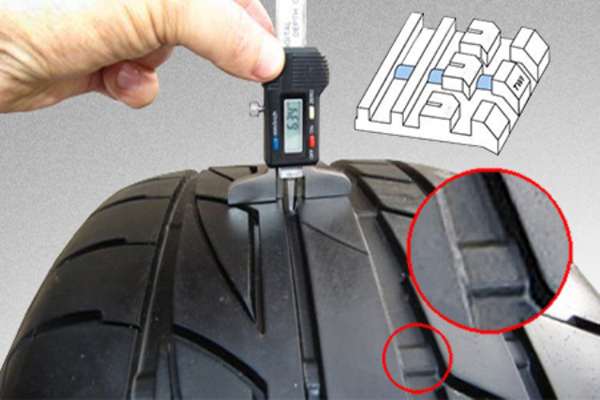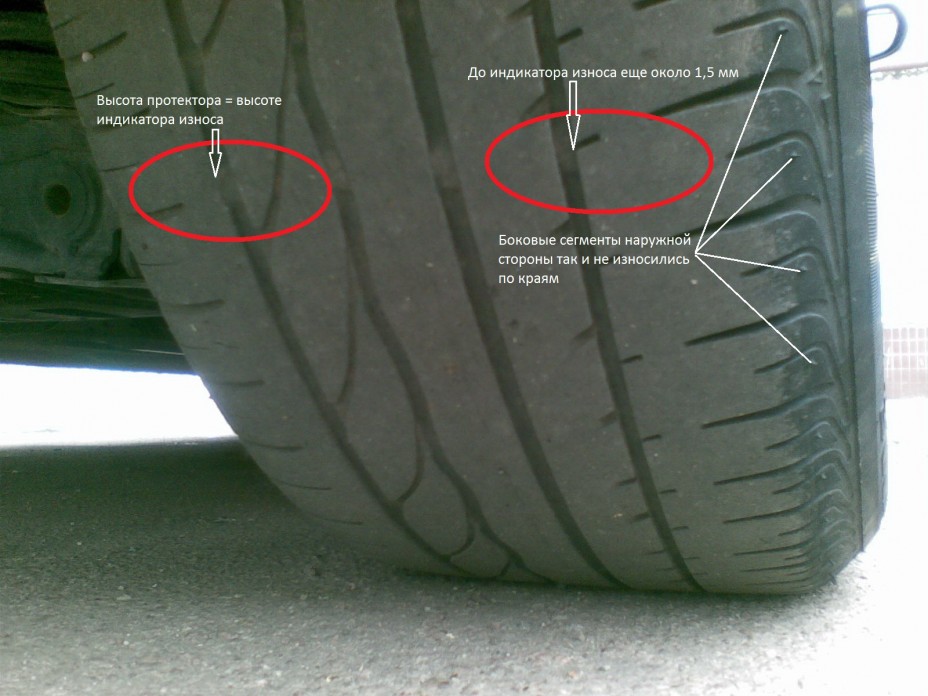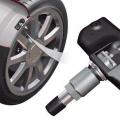Tires are the "shoe" of the car, and therefore they also affect the driving characteristics of the car. In this article we will talk about such an important topic as tire wear. And the truth is, every driver wants to know about the service life of car tires - how much tread wear is acceptable? But first, we will try to figure out what affects tire wear, how it occurs and how it can be increased.
Why do tires wear out?
High-quality and whole rubber installed on the car is the key to safe driving, and therefore it is strictly forbidden to ignore the condition of the tires. After all, badly worn tires can lead to a puncture of the camera or its explosion, and then the car in a matter of seconds can become completely uncontrollable, which leads to sad consequences at high speed.

Tire wear occurs gradually. This process is accompanied by abrasion of the rubber layer, which is in constant contact with the road surface. This process is inevitable, which means that any tire has a certain service life. However, there are factors that accelerate wear and tear and lead to premature failure of any rubber, regardless of brand.
First of all, the driving style, which the driver is accustomed to using during operation, affects the condition of the tires. Aggressive driving has a very tangible result, which manifests itself in the form of a reduced height of the tread pattern or cracks on its surface. Constant hard braking or acceleration results in increased friction and heating of the tire, which increases its temperature, and therefore, forces the rubber particles to quickly detach from the tire surface.
In addition to rapidly increasing or decreasing speed, driving at high speed through tight bends also increases tire wear, which is especially noticeable on SUVs where the differential lock is not disabled. As a result, the wheels of the car enter the turn at the same speed, which also increases their friction with the surface.
Another similar wear occurs as a result of the wheels turning in place while the vehicle is stationary. This often happens during parking, when there is no way to move and only during this process to turn the steering wheel.

Another factor of increased wear is the use of out-of-season rubber. Let's look at the example of using winter tires in the summer. The fact is that winter tires have a special property that makes them very soft, which allows them to maintain their elasticity in the cold season. On a hard road surface, such rubber heats up much faster, and therefore the wear of its surface also occurs at an increased level. In addition, riding on such rubber in summer makes the trip dangerous, since the braking distance of the car increases significantly.
The last reason for increased rubber wear is incorrect adjustment of the car's suspension. This is often observed when the deflection angles exceed the standard parameters. As a result, uneven but accelerated tire wear occurs, which leads to its rapid failure. A flat tire has a similar effect, when the edges of the rubber wear much faster than its center, and the disc exerts a compressive effect and spoils not only the rubber surface, but also its shape.
Video - How to Maximize Tire Life
Car rubber service life and permissible wear
As you understand, the life of the rubber depends on many factors related to the quality of vehicle operation. If you fulfill all the norms and requirements of maintenance and observe a calm driving style, then the service life of automobile rubber can be approximately 5-10 years. In all other cases, this figure can be greatly reduced and then the driver will incur very large financial costs for new tires.
How to determine that rubber wear has reached a critical level? First of all, visually. The most dangerous ride on worn tires can be considered the one where the tread is almost invisible. This rubber is also called "bald". To avoid unnecessary risks, you need to know a thing or two about the tread height of your tires.

A projector is called a special pattern made on the surface of the rubber to ensure the greatest adhesion to the road for which this tire is intended, as well as to protect the inner part of the rubber from various mechanical influences manifested in the process of contact of rubber with objects on the roadway. The tread height for summer tires should be at least 1.6 millimeters, and for winter tires - at least 4 millimeters. With a decrease in this value, the tire becomes unsuitable for further use and must be replaced.
The wear tolerance can be determined in a variety of ways. The first of them is elementary measurements of the tread height using a special ruler, which are made on the most worn part of the rubber. Other methods are related to the structural features of the tire itself.
To control the condition of the rubber, special digital values of permissible wear are applied on their surface, by which the driver can judge the need to change the tire. Other manufacturers install special bridges or a color-coded wear pattern into the tread.
That's all a driver needs to know about tire wear. We hope this article has answered all your questions regarding this topic.




